Preservation Philosophies
SHIP OF THESEUS
Readers may be familiar with the thought experiment known as the “Ship of Theseus.” It is a philosophical conundrum from antiquity and first appeared in Plutarch’s Life of Theseus:
The ship wherein Theseus and the youth of Athens returned had thirty oars, and was preserved by the Athenians…they took away the old planks as they decayed, putting in new and stronger timber in their place, insomuch that this ship became a standing example among the philosophers, for the logical question of things that grow; one [set of philosophers] holding that the ship remained the same, and the other [philosophers] contending that it was not the same. [The Internet Classics Archive, https://classics.mit.edu/]
Was the ship that had been slowly repaired, with new planks replacing rotten ones, still Theseus’ original vessel? As Plutarch notes, even at the time of the ship’s existence some believed it to be Theseus’ vessel, while others did not.
SAME AX, TWICE
There is an old joke about a farmer who said he had owned the same ax his whole life – he had only replaced the handle three time and the head twice! Is it still the same ax?
Howard Mansfield opens his book The Same Ax, Twice: Restoration and Renewal in a Throwaway Age, with the farmer’s joke but then continues the thought experiment, along the lines of the Ship of Theseus, with this riddle:
What’s the oldest unchanged house in the world?
Hint: It is made of a common material and lasts only one season. It is a house of water.
Igloos, a form unchanged for 50,000 years, are said to be the oldest shelter known. Each single igloo was a perishable item, but represented a tradition that lived until recently…
Another riddle: The most rebuilt wooden structures in the world are the most unchanged.
The Ise Shrine in Japan has been rebuilt almost every twenty years since the year 690 A.D…..The Japanese…conserve by copying and rebuilding…In the West we are used to monuments of stone…To the Japanese, Ise is 1.300 years old. It is the same ax, rebuilt sixty-one times… [Mansfield, 3-4]

And then Mansfield cites USS Constitution‘s many rebuilds and restorations as another example:
…Constitution…has survived some close calls with oblivion…. Saving a wooden ship is a job that’s never finished…. Anywhere from 10 to 20 percent of Old Ironsides (depending on who [sic] you talk to) is original. The farther you go down [inside the ship] the older the wood is…. The keel is original…. How could this be the same [ship]? Old Ironsides is more like a wooden garden [renewing itself or being renewed all the time…. [Mansfield, 5]
THE SAME SHIP, TWICE, THRICE…?
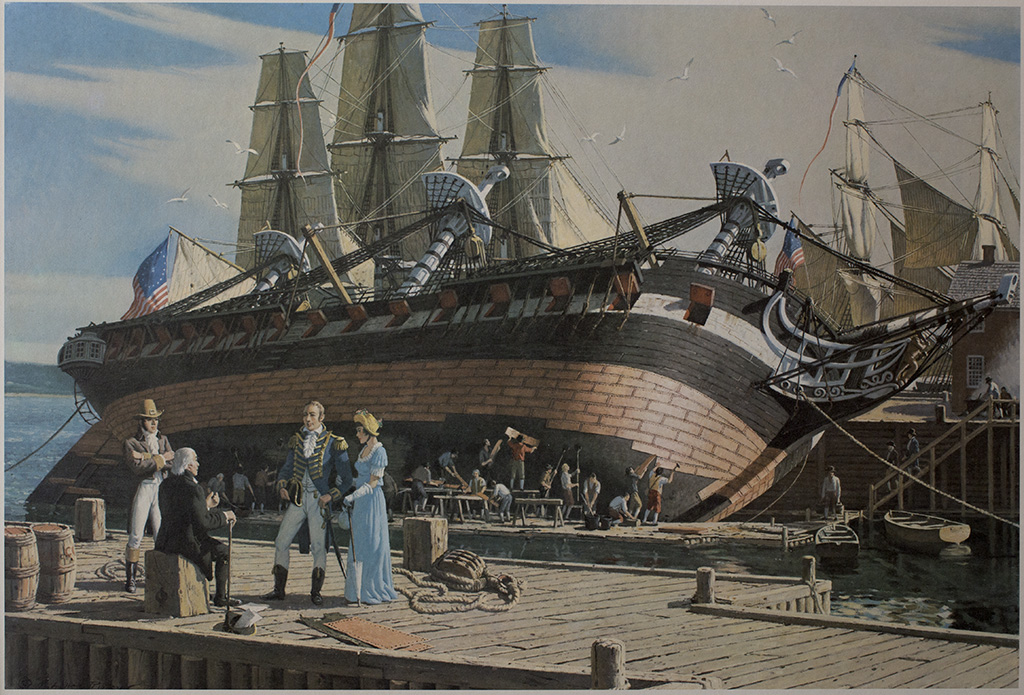
USS Constitution has undergone numerous “re-fits”, “rebuilds”, “over hauls” and, finally, “restorations” across her more than 220-year career. As early as 1801, after her service in the Quasi-War with France and only four years after she was launched, Constitution underwent an extensive re-fit with stern work and new Paul Revere-made copper sheathing. This work was executed prior to sailing to the Mediterranean as Commodore Edward Preble’s flagship in the Barbary War. And later, in 1819, Isaac Hull, who was a young Constitution lieutenant during the Quasi-War and then her first War of 1812 captain, wrote to Stephen Decatur of yet more repairs to the ship:
…[Constitution had received] a thorough repair…about eight years after she was built – every beam in her was new, and all the ceilings under the orlops were found rotten, and her plank outside from the water’s edge to the Gunwale were taken off and new put on. [Isaac Hull to Stephen Decatur, 23 October 1819, as quoted in Historic Resource Study, Volume I, Charlestown Navy Yard… Edwin C. Bearss, 307]
In less than ten years after her construction in Boston, Constitution had already experienced significant re-building and repair work. Was she still the same ship?
Let us keep ‘Old Ironsides’ at home. She has…become a Nation’s ship, and should be preserved…in honorable pomp, as a glorious monument of her own, and our other naval victories…
Let us preserve her as a precious model and example for future imitations of illustrious performances! [National Intelligencer, May 23, 1815]
PRESERVED VS RESTORED
The Antique and Classic Boat Society (ACBS) established definitions of “preserved” and “restored” boats which the society uses when judging an antique or classic boat:
ACBS defines preserved boats as those containing at least 60% of their original deck and topsides material and is constructed using the same methods and materials as the original. Bottom replacement is expected in order for the boat to be serviceable but the method of replacement must duplicate the original….
For a boat to be considered restored, its owner must…provide photographic evidence of the existence of the original identifiable boat and of the various stages of the restoration demonstrating that the original boat was always together as a single entity…At no point should two boats exist – i.e. a pattern boat and the new boat even if the pattern boat is subsequently destroyed. Building a new boat using some wood from an old one will not qualify as a restoration. [https://acbs.org/acbs-boat-classifications-judging-classes/]

But ACBS concludes with the following, definitive, statement:
The amount of original wood in a restored boat is not determinative. For example, the USS Constitution has essentially none of its original wood but we believe no one would consider it a replica. It is Old Ironsides.
NOT THE VESSEL THAT CAPTURED THE GUERRIERE…
And yet, the idea that the aging Constitution has always been the same ship, regardless of the amount of “original” material, was not always the case. Enter Charles Joseph Bonaparte, President Theodore Roosevelt’s Secretary of the Navy. In 1905, Bonaparte almost ended the ship’s valiant career. His annual report noted that because so much of the ship had been altered since 1812, Constitution was “not the vessel with which [Isaac] Hull [her captain had] captured…Guerriere.” Bonaparte declared the ship needn’t be preserved, but, he concluded:
If, for purely sentimental reasons, it be thought that this supposed veteran…is entitled to a warrior’s death, she might be used as a target for…the ships in our North Atlantic fleet and be sunk by their fire… [Annual Reports of the Navy Department for the Year 1906: Report of the Secretary of the Navy, 18-19]
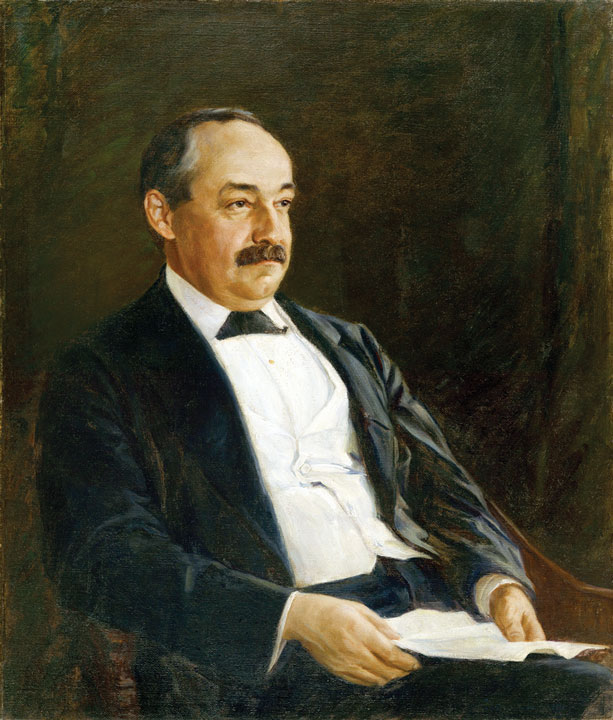
While Bonaparte was not inaccurate in his assessment of how little of the 1812 ship actually still existed in “Old Ironsides” by 1905, he gravely miscalculated the sympathies that the ship evoked for people. President Roosevelt, War of 1812 historian, passionate navalist, and a former assistant secretary of the navy, was one such sympathetic American. Roosevelt swiftly moved Bonaparte to attorney general where he (Bonaparte) helped to found the Federal Bureau of Investigation! Some monies were allocated and in 1906-1907, USS Constitution received her first “restoration” – a project with the intention of recreating an earlier era in the ship’s physical history.
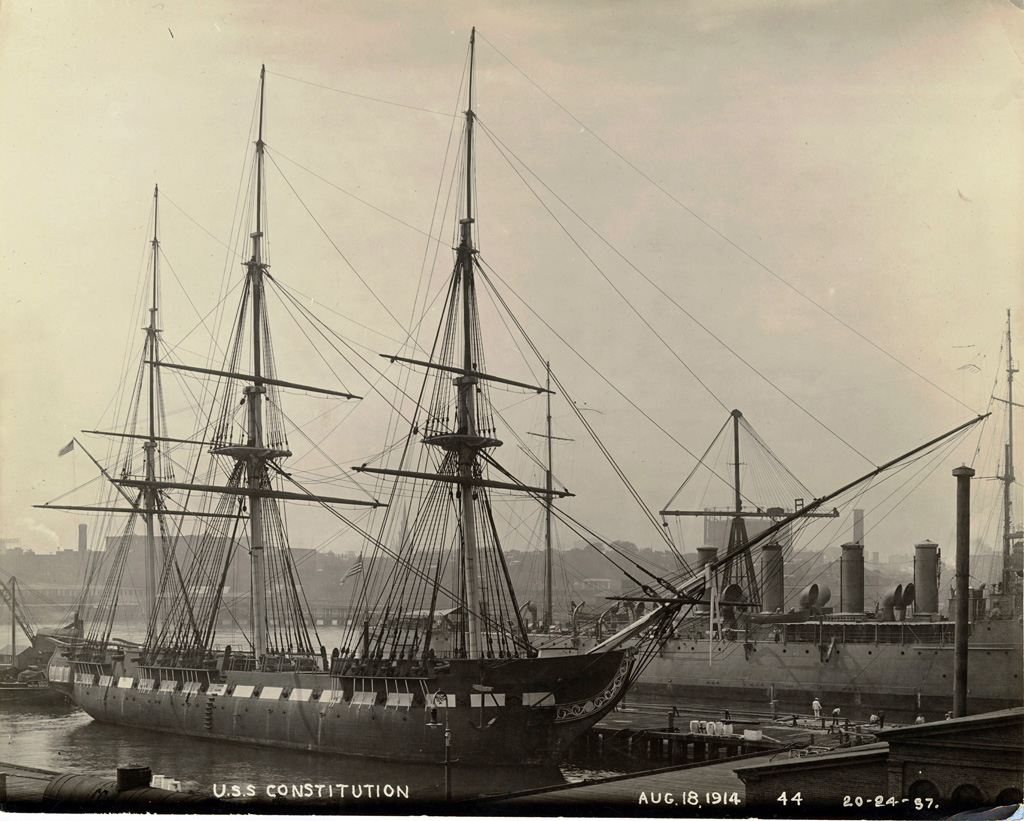
IDENTITY AND PERSISTENCE
…under what conditions does an object persist through time as one and the same object? If the world contains things which endure, and retain their identity in spite of undergoing alteration, then somehow those things persist through changes. [S.M. Cohen, “Identity, Persistence, and the Ship of Theseus”, Philosophy 320, University of Washington]
Despite an official name-change in World War I to “Old Constitution“, and significant structural changes over 220 years, the ship’s enduring identity, as a successful United States Navy warship, nicknamed “Old Ironsides”, has persisted. The U.S. Navy’s philosophy mirrors that of the Antique Classic Boat Society, the ship has always been Constitution and will always remain Constitution, regardless of how much or little 1790s materials exists in the ship’s structure.
MAINTAINING A ‘NATION’S SHIP’
And so the Naval History & Heritage Command Detachment Boston continues with the maintenance and restoration of “Old Ironsides”. In the months since Constitution‘s re-float from Dry Dock 1 in late July, 2017, work has continued on the ship. Recently, the jibboom was completely replaced with a laminated Douglas fir spar and a new spritsail yard is underway.
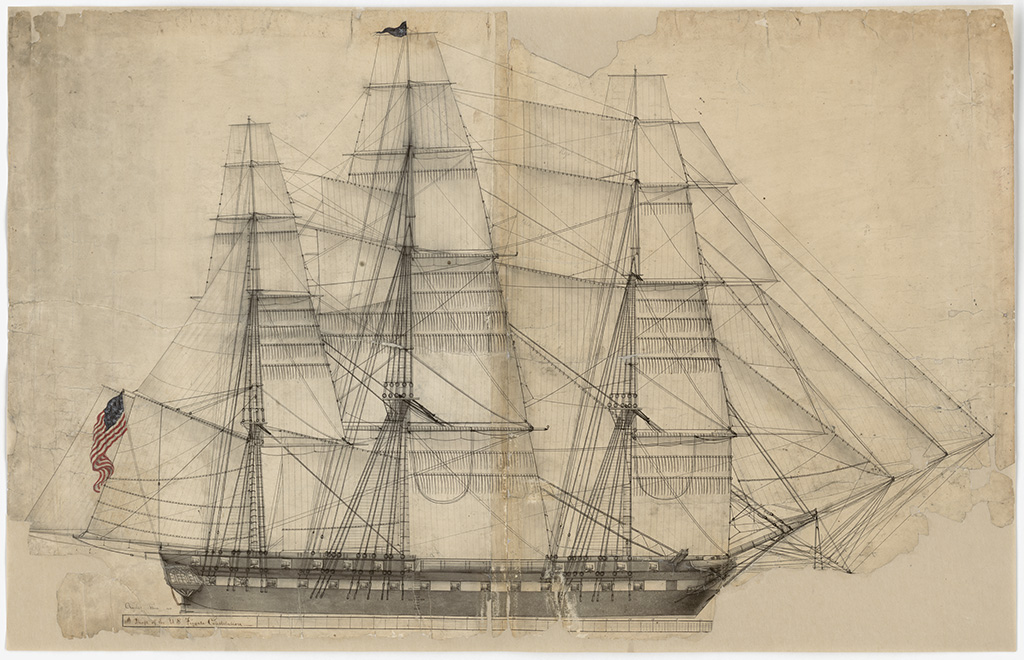

The jibboom that was removed from Constitution prior to the ship entering Dry Dock 1 in May, 2015, was manufactured in May, 2003, from laminated Douglas fir. It was refurbished in the 2007-2010 (floating) restoration and re-installed in 2010. The plan used for manufacturing the new jibboom was originally drawn for the 1927 restoration.
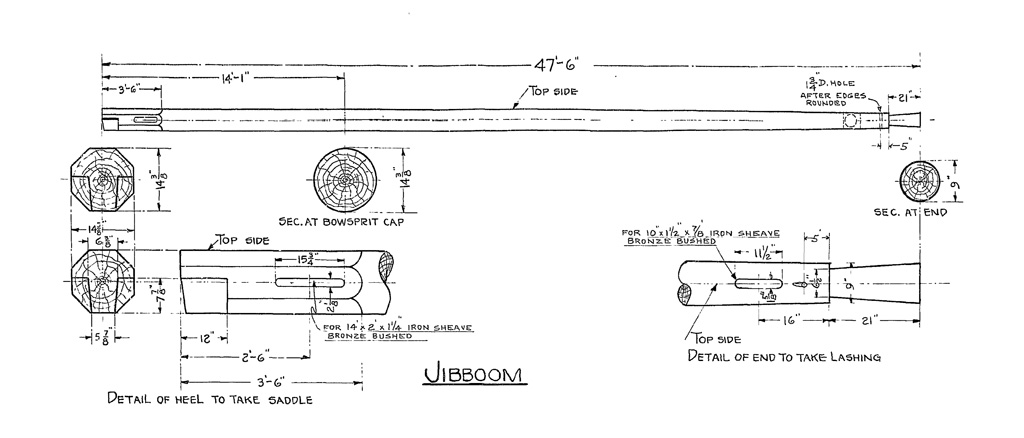
Naval History & Heritage Command Detachment Boston ship restorer Kevin Mansfield manufactured the new jibboom from laminated Douglas fir.
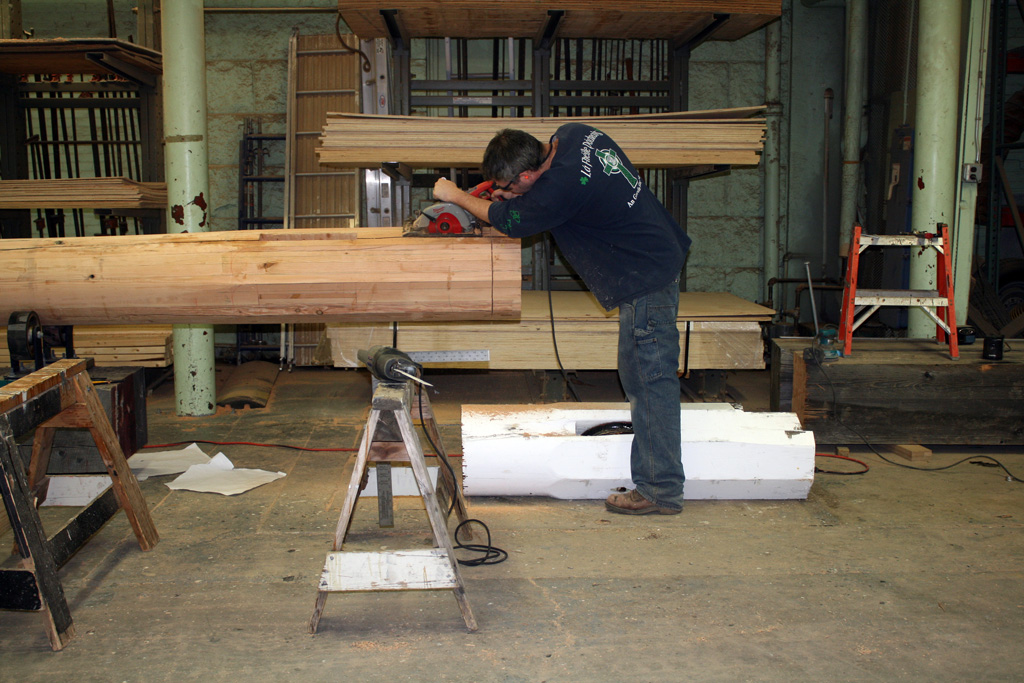
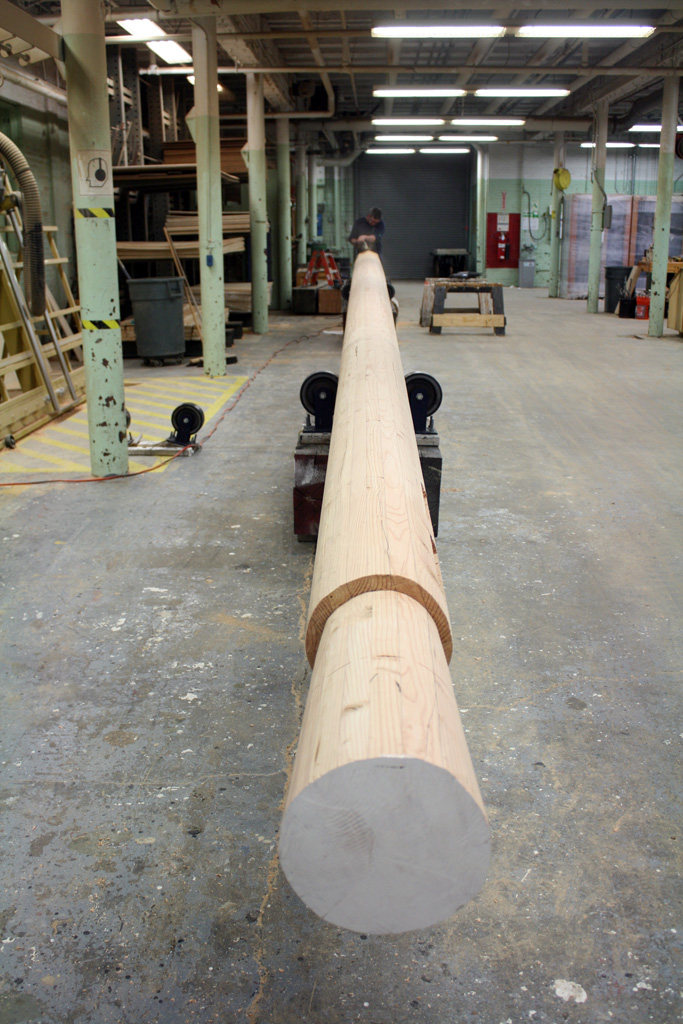
The new spritsail yard replaces a laminated Douglas fir spritsail yard that made for the 2007-2010 (floating) restoration and installed in June, 2010. Like the jibboom, a 1927 restoration plan and the 2010 spritsail yard are the guides for the work.
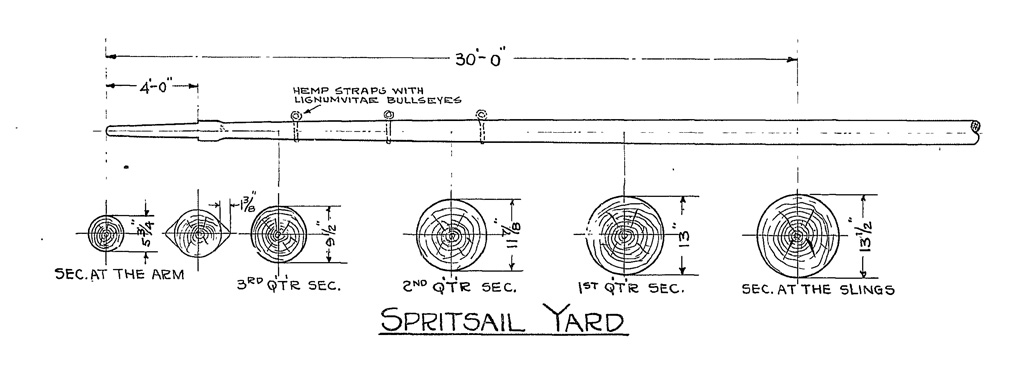
The following photographs show the early stages of laying out the shape of the spritsail yard on the blank piece of laminated Douglas fir. The yard, when finished, will be 60 feet long.
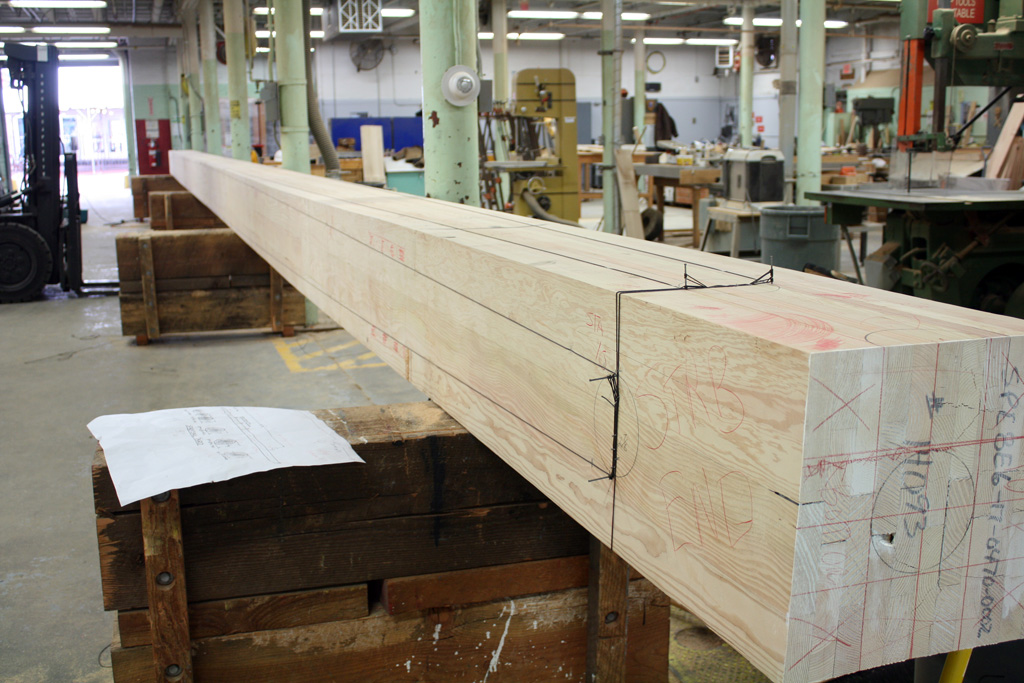
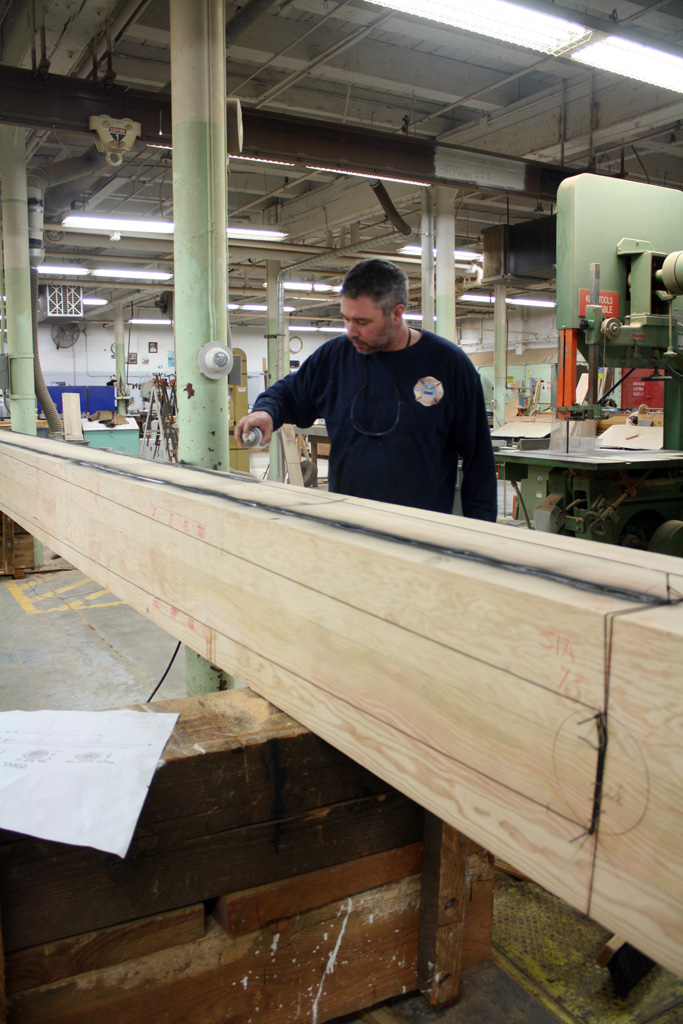
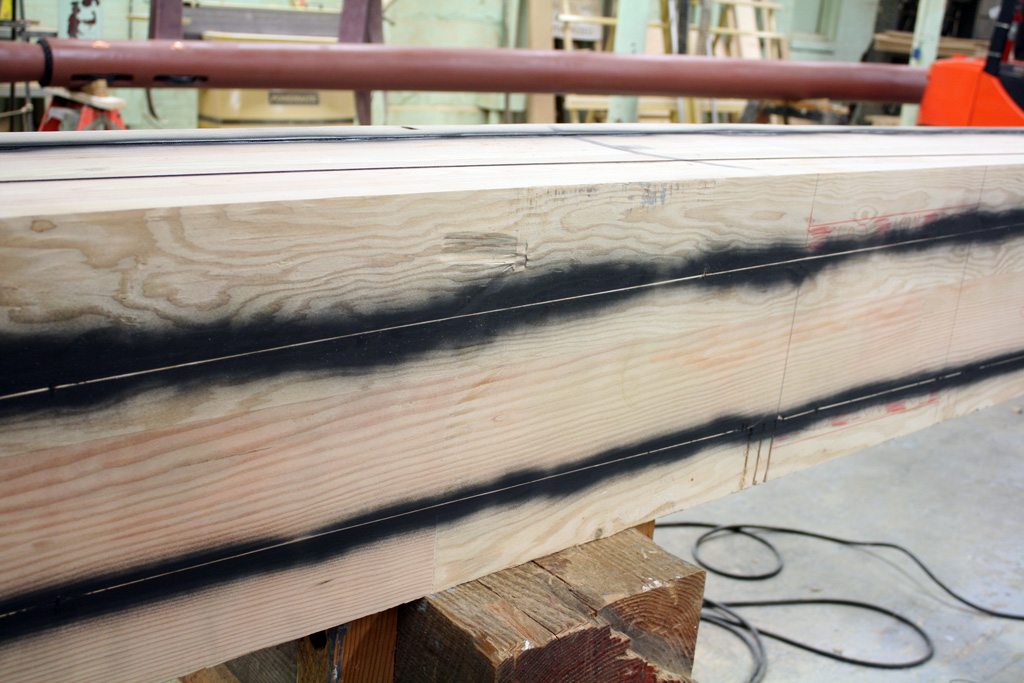
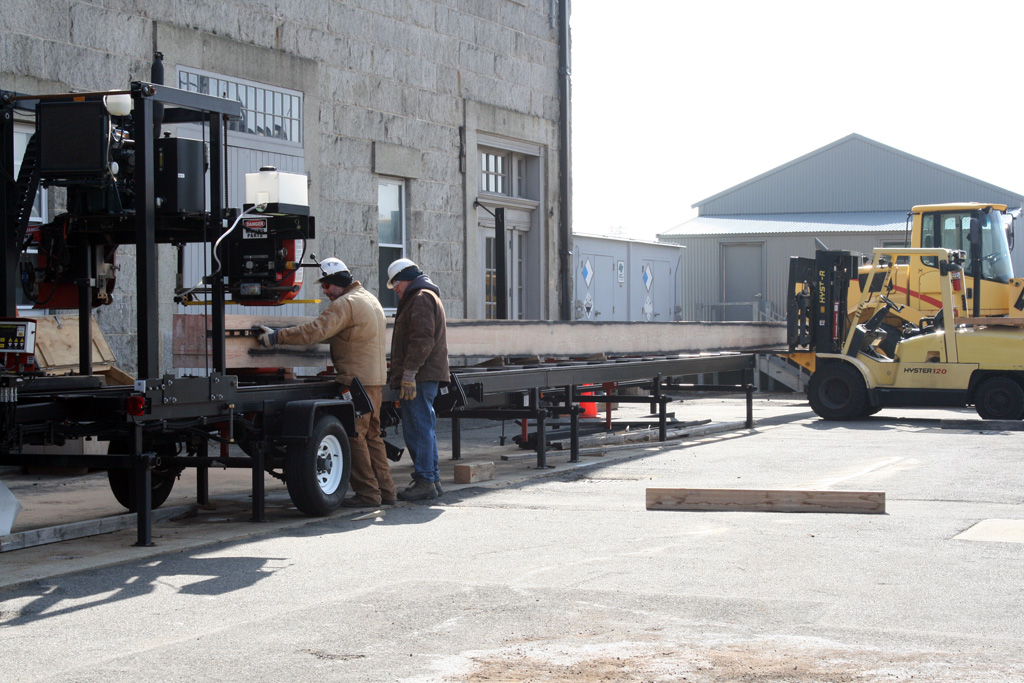
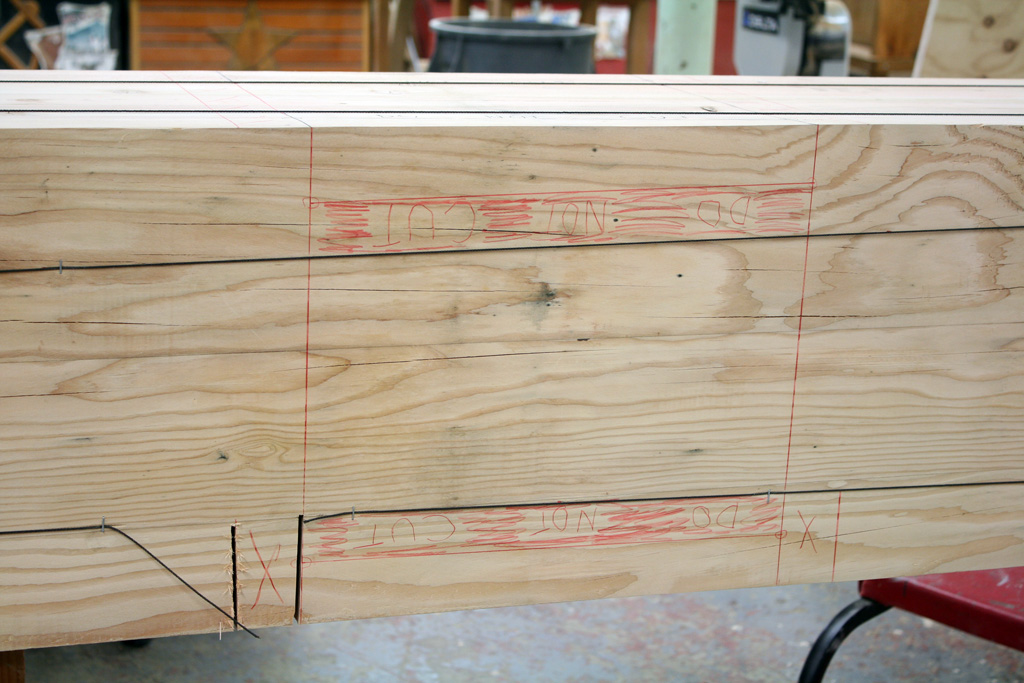
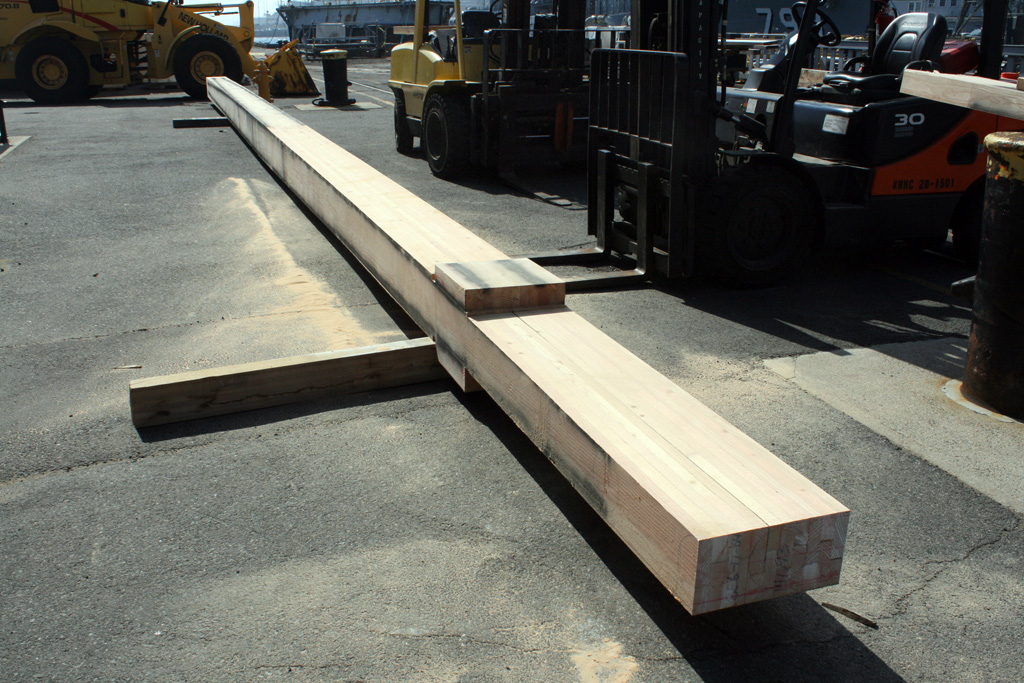
As spring arrives in Boston, the up-rigging and installation of spars on USS Constitution will continue so that the ship will be fully rigged for the 2018 summer season. The preservation and restoration of America’s Ship of State is an awesome responsibility. And unlike the Ship of Theseus, which had doubters as to its authenticity because of its lack of “original” material, few visitors to “Old Ironsides” today have any doubt that they are encountering history when they walk the ship’s decks and learn of the men who served aboard and sacrificed for their country.
And if you’re wondering, the Naval History & Heritage Command Detachment Boston thinks there’s about 8 – 10% original material, dating from the ship’s building period (1794-1797), left in USS Constitution. This is not a scientific assessment, but more of an educated guess based upon records of past rebuilds and restorations.
The Author(s)
Margherita Desy, Historian, Naval History and Heritage Command Detachment Boston
Historian, Naval History and Heritage Command
Margherita M. Desy is the Historian for USS Constitution at Naval History and Heritage Command Detachment Boston.
